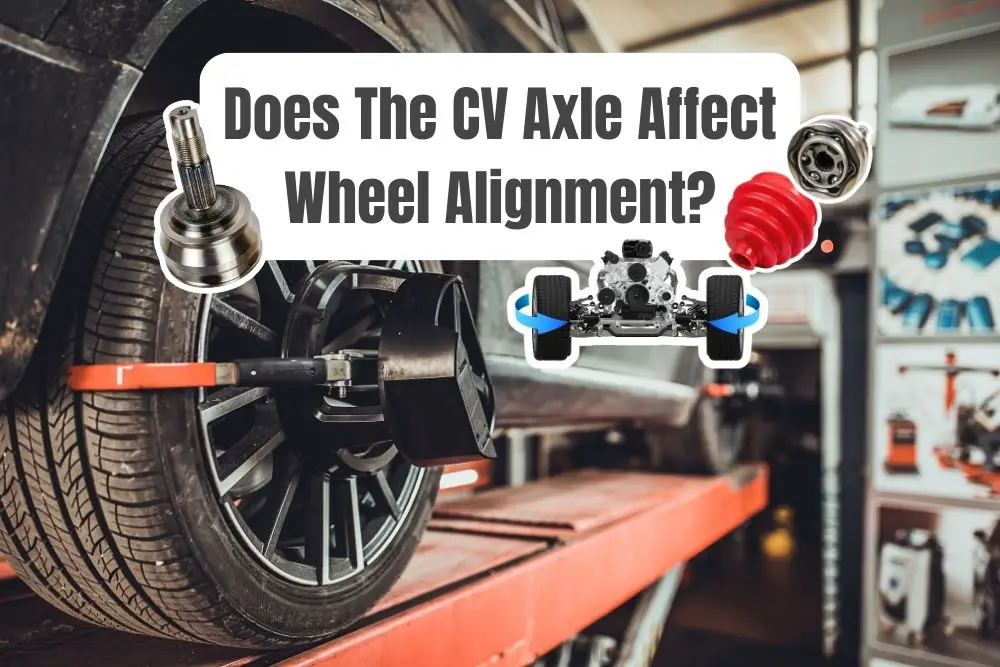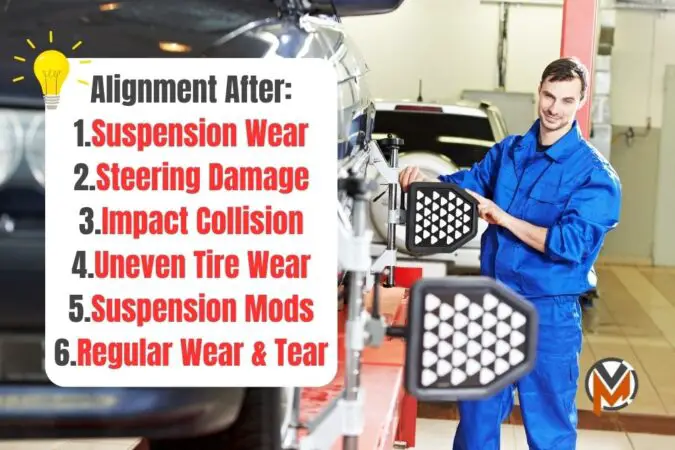Given the close relationship between your car’s CV axles and joints with your wheels, it doesn’t surprise me that most people are concerned about whether or not does the CV axle affects the wheel alignment on your car.
There are a lot of things that – following a repair, service, or replacement job – could impact a car’s wheel and tire alignment. However, among the parts that don’t typically impact the alignment is your CV axle.
As such, replacing a CV axle or a CV joint doesn’t normally, directly affect your wheel alignment. Instead, a lot of other issues, such as suspension wear or faulty steering parts, could otherwise impact alignment.
- Do CV Axles Impact Wheel Alignment?
- When To Consider A Wheel Alignment?
- What To Do After Replacing CV Axles?
CV Axle And Wheel Alignment
To elaborate a bit further, what is a CV axle? Well, the constant velocity (CV) axle is a crucial component in your car’s drivetrain. It essentially helps to transmit power from your transmission to your wheels.
This is what allows for a smooth ride, even when the steering wheel is turned. A CV axle has two joints; the inner joint connects to the transmission, while the outer joint connects to your car’s driven wheels.
A very common misconception is that replacing the CV axles can directly affect your car’s wheel alignment. However, the truth is that the process of replacing a CV axle itself typically does not affect the alignment.
Alignment concerns the angles of the wheels relative to each other and the car’s body, while the CV axle is part of the drivetrain. If you notice alignment issues after replacing the CV axle, it could instead be:
- Poor installation or incorrect processes followed during the replacement process.
- Suspension problems on your car that might coincide with the CV axle replacement job.
- Other underlying issues (more below) that might’ve been exacerbated by the replacement process.
CAUTION: If you do experience steering and handling issues after the replacement, it’s prudent to have the alignment checked. This ensures that any underlying faults, possibly exacerbated by a CV axle replacement, are addressed.
What Repairs Require An Alignment
However, while a CV axle or joint replacement may not usually affect your wheel alignment, here are some of the problems and underlying issues that might impact your car’s wheel alignment, instead:
- Suspension Wear & Tear – Worn-out shocks, struts, or springs can lead to alignment issues. Meanwhile, bad bushings or damaged control arms can affect wheel positioning.
- Steering System Problems – Worn tie rods and ball joints can cause misalignment. Similarly, any issues with your power steering system can indirectly impact the wheel alignment.
- Impacts From Collisions Or Potholes – Collisions or hitting too hard potholes can sometimes knock your car’s wheels out of alignment. The same goes for bent frames or axles on your car.
- Tire-Related Issues – Uneven tire wear, as well as driving with incorrect tire pressures can lead to wheel alignment issues.
- Modifications Or Upgrades – Suspension modifications (such as lifting or lowering your car) could impact its wheel alignment. So, make sure your aftermarket parts meet OEM specifications.
- Regular Wear & Tear – Regular driving over time naturally leads to alignment shifts. This is particularly so if you regularly drive on rough roads, go off-roading, drive your car hard on track, and heavy usage.
- Improper Previous Repairs – Incorrect installation of suspension or steering components during repairs, and the failure to realign your wheels after significant repairs or part replacements can cause misalignments.
What To Do After Replacing The CV Axles
Although a CV axle replacement does not directly affect your wheel alignment, there are a couple of pretty important things to do after replacing them. Here’s a quick list of what should be done afterward:
- Inspection Of Related Parts – This means checking for leaks around the axle seals, and inspecting the CV boots for any damage. Then, make sure that all the bolts and fasteners are properly tightened.
- Suspension & Steering Check – Examine your car’s suspension components for any signs of disturbance and damage. Once that’s done, verify that your steering system remains intact and functions smoothly.
- Test Drive & Handling Assessment – It’s also important to conduct a test drive to assess your car’s handling. During this test drive, pay attention to any unusual noises, vibrations, or steering issues.
- Wheel Alignment Consideration – While not always necessary, consider a wheel alignment check, especially if there are any handling issues or if suspension components are disturbed.
- Brake System Inspection – Check your car’s brake lines and brake pads for any potential faults caused by the axle replacement.
- Post-Replacement Maintenance – Make sure that you monitor your car over the next few days for any signs of issues. If there are problems or if you’re unsure, schedule a follow-up inspection if any concerns arise.


